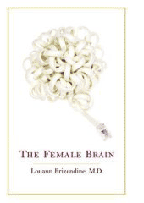Reviews:
Reporter World provides a variety of safety equipment, identification products, specialized high-visibility clothing, pertinent news, product reviews, book reviews and useful links specifically for reporters, writers, assignment editors, news correspondents, journalists, ENG crews, photographers, production staff, directors, segment producers, media security personnel, and freelancers: in short, anyone who is part of the news gathering, information reporting, or documentary film industries.
In this section we review various products and services of relevance to reporters, writers, correspondents, ENG teams and production staff. These products include cameras and accessories; computer hardware and software; scanners; printers; books and other products. Smaller, mini-reviews, are also available in other sections of this site including Products, Books and Movies.
We are constantly adding additional reviews to this section. If you have any suggestions for other products you would like us to review, simply e-mail us using the feedback address on our Terms of Service page. Please supply us with as much information as you can about the product (including name, manufacturer, model number) or book (including title, author, ISBN and publisher).
 Title: The Female Brain
Title: The Female Brain
Author: Louanne Brizendine, M.D.
ISBN: 0-7679-2009-0
Publisher: Morgan Road Books, a division of Random House
Copyright: 2006
Relevance: This book is of interest to any reporter who wants to understand more about female behavior from a chemical and hormonal basis: why women act the way they do, how and why they relate and communicate, and generally why they are very different from their male counterparts. Ideal for all interviewers, researchers and those reporters interested in social engineering… and, of course, armchair scientists.
Review: Scientists now know that all humans start off as female. Only eight weeks into their development some babies – males, as it turns out – receive a massive dose of testosterone that sends them on a completely different path to adulthood.
According to author and neuropsychiatrist, Louanne Brizendine, testosterone shrinks the areas in the brain of males that control communications (including the ability to listen and to speak) and doubles the parts of the brain that control and drive sex. It’s no wonder, she muses, that women use on average about 20,000 words per day, while a man gets by with roughly 7,000.
These massive differences in hormonal levels and biochemical events primarily at the developmental stage also explain away such mysteries as why a woman can dwell on arguments and disagreements that have long since been forgotten by her male counterpart. It also explains, according to Dr. Brizendine, why many teenage girls spend hours in front of a mirror or on the telephone to their best friends. It’s the hormones. Pure and simple.
And then there’s sex. Turns out a sexual thought occurs to the average woman once every of couple days while, you guessed it, the average man has a sexual thought every minute or so. We don’t exactly learn how this fact was derived, but if true, it would help to explain a few things about how the two genders relate. After reading Dr. Brizendine’s thoughtful and provocative book, it’s a wonder how men and women ever successfully pair up and stay together. The answer for Dr. Brizendine is that it’s merely evolution trying to maximize chances of species survival.
The Female Brain deals primarily with identifying the chemical and hormonal components involved in the human brain, most notably in the female brain. Although Dr. Brizendine has impressive educational credentials, she seems to often make questionable conclusions in linking what science currently “knows” about hormonal levels and consequential interactions with how people in general and women in specific actually behave as a direct result of these chemical events. Still, no matter what your thoughts about the spin of the book, there’s no doubt that The Female Brain makes for very interesting and provocative reading.
Dr. Brizendine starts us off with a detailed introduction aimed at women, explaining the physical geography of the human brain in “What Makes Us Women”. Next, she follows up with a chapter explaining how brains are either female (the apparent default setting for humans) or male in “The Birth of the Female Brain”. The book is written both from an “owners manual” perspective (it’s safe to assume that at least half the book’s readers will be women) and from an “armchair scientist” point of view. Brizendine’s breezy style throughout makes what might be a dry and complex subject into light and easy reading.
In “Teen Girl Brain”, Dr. Brizendine really puts her expertise to work as she attempts to explain why teenage girls behave the way they do: why do they bond so strongly with other teen girls and in particular, one or two key girlfriends, why they can rebel against their own trusted mothers at the drop of a hormonal hat, and why they mature sexually before their male teen counterparts.
While this very complex process can be understood with today’s diagnostic tools, Dr. Brizendine never really tells her readers how or why tense situations caused by temporary hormonal swings can be mitigated – or even if they should be mitigated. For her, it’s all about the raw science.
In the chapter title, “Love and Trust”, the author puts forward her theories as to why many women feel they need to wait far longer to have sex than their male partners. In “Sex: The Brain Below the Belt” Dr. Brizendine explains why, hormonally speaking, a women’s sex drive decreases after a “successful” pair bond. Apparently, the average male is really barking up the wrong tree if he thinks his marrying a particular woman will ensure her continued availability as a dependable sex partner. As soon as women feel they are secure in a relationship, claims Dr. Brizendine, their body chemistry physically changes making it less likely for them to want sex, unless it’s with another, “more suitable” (i.e., more attractive) man.
Even more interesting for women (and men) is the chapter titled, “The Mommy Brain”. Here, Dr. Brizendine explains the complex biochemical changes that a mother-to-be’s brain undergoes during pregnancy, and even more, shortly after the birth of her baby. Any woman who has been through childbirth knows first-hand how her body (and brain) changes to accommodate her baby. Perhaps surprising for many mothers, is that these changes are apparently permanent.
Epigenetic
Researchers have also found that if mothers are inattentive, they physically affect the nurturing circuits of their daughters, meaning that “…females ‘inherit’ their mothers’ maternal behavior, good or bad, then pass it along to their daughters and granddaughters. Although behavior itself can’t be passed on genetically, new research shows that nurturing capacity in mammals is passed on, in what scientists now call a nongenomic or ‘epigenetic’ – meaning physically on top of the genes – type of inheritance.”
In English, this means that this genetics-influenced biochemistry may be responsible for intergenerational communication and learning processes. If true, Dr. Brizendine’s beginning work in this sector may prove to be quite prophetic indeed.
Other chapters, notably “Emotion: The Feeling Brain” and “The Mature Brain” also underscore Dr. Brizendine’s thesis that women are very much guided by a very complex hormonal storyboard that changes, sometimes hourly, but certainly day to day and throughout her monthly cycle and through key phases of her life from early childhood and into menopause.
What isn’t clear, however, is how this information can be used to a woman’s (or a man’s) advantage. While it is certainly true that all organisms are far more complex than science thought only a few years ago (and this is especially true when it comes to human neuro-biochemistry), the reader may not see the big picture of how all this wonderful research can be applied to help in everyday activities. There are no prescriptive lists of “if this, then this”; nor is it clear there really should be given the author’s viewpoint on the subject.
Overall: This said, The Female Brain does make for a very interesting read, despite the fact there are few, if any, concrete hints on what to do and when. It is true that several biochemical-based behavioral explanations are there if readers feel so inclined (and in this, Dr. Brizendine does not disappoint, offering up a massive bibliography). Some readers, however, may want to have additional hard science to further their research. Other readers may want fewer scientific explanations and more of a behavioral road map to facilitate communication. Within these parameters, the book is recommended.
End of Review
Have your say.
You can give us your feedback by visiting our Terms of Service page.
Buy this book.
If you wish to buy this book right now, please click here.
Read other reviews.
If you wish to return to the main Reviews page, please click here.






